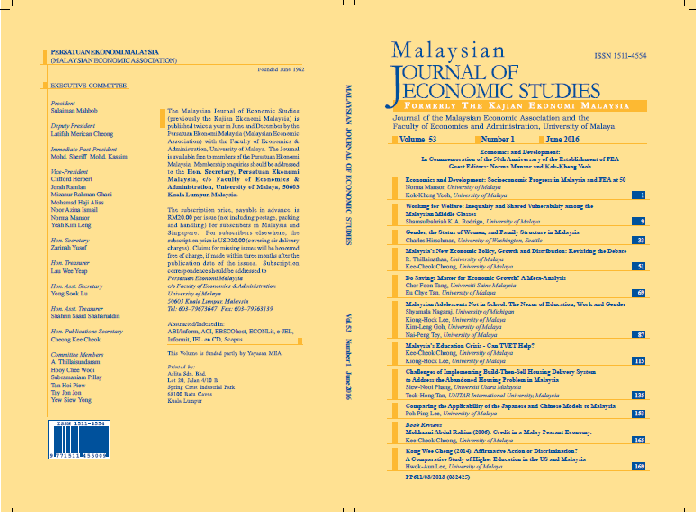Comparing the Applicability of the Japanese and Chinese Models to Malaysia
Keywords:
Chinese model, development state, Japanese modelAbstract
An intriguing question arises as to why the Chinese model did not catch on in Malaysia and the rest of the Association of Southeast Asian Nations (ASEAN) 5 (i.e., Indonesia, the Philippines, Singapore, and Thailand) as compared to the Japanese model when China’s post-1980 growth rate exceeded Japan’s growth rate in the 1970s and 1980s. China’s performance is even more impressive due to its scale (China has a population of 1.3 billion compared to Japan’s 120 million). This article attempts to answer this by first considering the timing. The Japanese model was adopted in the early 1980s when Malaysia then was looking for a model, but not now. The nature of both models will be discussed. The Chinese model is not original and is a derivative of the Japanese model. It too was successful in alleviating poverty, and attracting foreign investment. These achievements hold no allure for Malaysia, which also has a good record in both endeavours. Finally, that Japan is an industrialised country and for a long time had a one party dominant system appealed to Malaysia.

